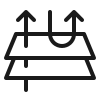Rosacea
Vancouver MediSpa, under the exceptional leadership of Kam, truly deserves every bit of praise it receives. From the moment I stepped in, I was greeted with warmth and professionalism. Kam is not only highly skilled and knowledgeable but also genuinely caring, ensuring every visit is a comfortable and enjoyable experience. The facilities are top-notch, impeccably clean, and equipped with the latest technology. Kam’s dedication to providing the best skincare solutions is evident in every aspect of the clinic. I couldn’t be happier with the results I’ve achieved here. Tario Sultan2024-03-29I have been dealing with acne and insecurities around my skin since I was a young girl, and I've tried everything! ...... Till I met Kam and her blessed Medi Spa. This woman is more than an aesthetician, she cares deeply about who I am and gives it her all to provide the best results--WHICH ARE MIRACULOUS! Thank you Vancouver Medi Spa, for your humble, warm, and delivering clinic. Laser is amazing, and Kam provides a plethora of education from A to Z. My face is now clear after 2 sessions...Something I dreamed of having since a young girl. The place is so clean, and filled with positivity. I especially love the ambiance of music and mantras that play in her spa during the sessions. She truly goes above and beyond to make her clients happy. :) Top laser medi spa in Vancouver for sure!!!!! Won't anything like this anywhere else. God Bless!
Tario Sultan2024-03-29I have been dealing with acne and insecurities around my skin since I was a young girl, and I've tried everything! ...... Till I met Kam and her blessed Medi Spa. This woman is more than an aesthetician, she cares deeply about who I am and gives it her all to provide the best results--WHICH ARE MIRACULOUS! Thank you Vancouver Medi Spa, for your humble, warm, and delivering clinic. Laser is amazing, and Kam provides a plethora of education from A to Z. My face is now clear after 2 sessions...Something I dreamed of having since a young girl. The place is so clean, and filled with positivity. I especially love the ambiance of music and mantras that play in her spa during the sessions. She truly goes above and beyond to make her clients happy. :) Top laser medi spa in Vancouver for sure!!!!! Won't anything like this anywhere else. God Bless! Sandra Al Hunaidi2024-03-21KAM IS AMAZING! The service is wonderful, FOTONA 4D!! Game changer. Thank you so much for the hospitality and great service. This is the BEST medi spa on the map.
Sandra Al Hunaidi2024-03-21KAM IS AMAZING! The service is wonderful, FOTONA 4D!! Game changer. Thank you so much for the hospitality and great service. This is the BEST medi spa on the map. sandra alhunaidi2024-02-22This review is for genuine knoweldge and kindness of kam. I went there for consultation and to get skin treatment but kam instead suggested i need to focus on my diet and be healthy from inside. She did not try to grab money like other estheticians. She suggested i should come back again once i get on track with my diet.
sandra alhunaidi2024-02-22This review is for genuine knoweldge and kindness of kam. I went there for consultation and to get skin treatment but kam instead suggested i need to focus on my diet and be healthy from inside. She did not try to grab money like other estheticians. She suggested i should come back again once i get on track with my diet. Manu Wr2024-02-18I have been getting laser treatments from Kam for the past few months. She is incredibly kind, knowledgeable, and professional. I’ve had laser treatments in the past that haven’t worked, so I was worried about investing in more. However, Kam did multiple test patches to see how my skin/ hair would react before charging me for any full treatments. I’m happy with my progress so far and can’t say enough good things about Kam!
Manu Wr2024-02-18I have been getting laser treatments from Kam for the past few months. She is incredibly kind, knowledgeable, and professional. I’ve had laser treatments in the past that haven’t worked, so I was worried about investing in more. However, Kam did multiple test patches to see how my skin/ hair would react before charging me for any full treatments. I’m happy with my progress so far and can’t say enough good things about Kam! Isabel Gittins2023-12-13Kam is super professional she knows what she is doing. Also she makes you feel so comfortable and welcomed. I’d recommend to anyone her clinic. Don’t hesitate to contact her.
Isabel Gittins2023-12-13Kam is super professional she knows what she is doing. Also she makes you feel so comfortable and welcomed. I’d recommend to anyone her clinic. Don’t hesitate to contact her. Monika Dienes2023-12-05I just love how Kam takes care of me, she really did great on my skin. Now I'm smooth as butter no need to shave. She even advised me on how to take care of my skin properly. I will definitely come back and highly recommend Vancouver Medispa.
Monika Dienes2023-12-05I just love how Kam takes care of me, she really did great on my skin. Now I'm smooth as butter no need to shave. She even advised me on how to take care of my skin properly. I will definitely come back and highly recommend Vancouver Medispa. Angelita Velasquez2023-11-03
Angelita Velasquez2023-11-03
Concerns
Rosacea Treatment Options
Rosacea treatments utilize topical treatments, oral medications, and laser therapy to effectively reduce redness, soothe inflammation, and improve overall skin texture.

Topical Treatments
Soothes inflammation, Reduces redness

Oral Medications
Reduces severity of flare-ups

Laser Therapy
Improves overall skin tone

Vancouver Medi Spa
Why Choose Us For Rosacea Treatments
We understand that considering treatments for rosacea may raise concerns about potential side effects or the effectiveness of the procedures. However, at Malasa, we prioritize the safety and satisfaction of our clients by offering a range of proven treatments tailored to each individual’s needs.
Concerns about adverse reactions are addressed through thorough consultations and skin assessments, allowing us to develop personalized treatment plans that minimize risks and maximize results.
Treatments
Rosacea Treatments We Offer in Vancouver, BC
- Benefits: Soothes inflammation, Reduces redness
- How It Works: Topical creams and gels containing anti-inflammatory ingredients help calm redness and inflammation associated with rosacea.
- Pre-Instructions: Avoid harsh skincare products, Protect skin from sun exposure
- Post-Instructions: Moisturize regularly, Use gentle skincare products
- Results: Reduction in redness and flare-ups, Improved skin texture
- Clinical Studies: Research supports the efficacy of topical treatments in managing rosacea symptoms.
- Benefits: Controls inflammation, Reduces severity of flare-ups
- How It Works: Oral medications such as antibiotics or anti-inflammatories help to control inflammation and minimize the severity of rosacea symptoms.
- Pre-Instructions: Take medication as prescribed, Avoid triggers such as spicy foods and alcohol
- Post-Instructions: Follow up with healthcare provider, Maintain a healthy lifestyle
- Results: Reduction in redness and inflammation, Prevention of future flare-ups
- Clinical Studies: Studies demonstrate the effectiveness of oral medications in managing rosacea symptoms.
- Benefits: Targets visible blood vessels, Improves overall skin tone
- How It Works: Laser energy targets and shrinks visible blood vessels in the skin, reducing redness and improving skin tone.
- Pre-Instructions: Avoid sun exposure, Discontinue use of photosensitizing medications
- Post-Instructions: Apply soothing creams, Protect skin from sun exposure
- Results: Reduction in redness and visible blood vessels, Improved skin texture
- Clinical Studies: Research supports the efficacy of laser therapy in reducing redness and visible blood vessels associated with rosacea.
Frequently Asked Questions
How Our Services Work
- Reduced Redness: Topical treatments and oral medications help to calm inflammation and minimize redness.
- Improved Skin Texture: Laser therapy targets visible blood vessels and improves overall skin tone.
- Topical Treatments: Soothe inflammation and reduce redness with anti-inflammatory ingredients.
- Oral Medications: Control inflammation and minimize the severity of rosacea symptoms.
- Laser Therapy: Targets visible blood vessels and shrinks them, reducing redness and improving skin tone.
Pre-Instructions:
- Avoid Harsh Skincare Products: Minimize irritation to the skin by avoiding harsh products.
- Protect Skin from Sun Exposure: Prevent further inflammation by wearing sunscreen and protective clothing.
Post-Instructions:
- Moisturize Regularly: Keep the skin hydrated to maintain its health and resilience.
- Use Gentle Skincare Products: Avoid products that may irritate the skin and exacerbate rosacea symptoms.
- Reduction in Redness: Noticeable decrease in redness and inflammation with continued treatment.
- Improved Skin Texture: Smoother, more even skin texture with reduced visible blood vessels.
- Topical Treatments: Research supports the efficacy of topical treatments in managing rosacea symptoms.
- Oral Medications: Studies demonstrate the effectiveness of oral medications in controlling inflammation and reducing rosacea severity.
- Laser Therapy: Clinical studies confirm the efficacy of laser therapy in reducing redness and visible blood vessels associated with rosacea.
Location
Conveniently Located In Vancouver, BC
Conveniently nestled in the heart of Downtown Vancouver, Vancouver Medi Spa offers easy access to premium aesthetic treatments at our centrally situated location on 1086 Hornby Street. Operating from 10 am to 8 pm every day, our extended hours cater to your busy schedule, ensuring that you can prioritize self-care and beauty enhancement at a time that works best for you. Whether you’re a local resident or visiting the vibrant city of Vancouver, our prime location makes it effortless to indulge in a rejuvenating spa experience and discover the transformative benefits of our advanced treatments.
Vancouver Medi Spa
Schedule a consultation
If you’re ready to take the first step towards achieving your aesthetic goals, schedule a consultation with us today. During your consultation, our experienced team will assess your unique needs and develop a personalized treatment plan tailored to you.
Whether you’re interested in laser hair restoration, pigmented lesion removal, or any of our other services, we’re here to help you look and feel your best. Contact us at 604-620-1772 or email us at info@vancouvermedispa.ca to book your consultation now.
First time clients
Claim our exclusive Medi Spa offer
Book your first appointment today and receive a complimentary wellness consultation with one of our experienced practitioners. Discover personalized solutions to address your unique needs and embark on a path towards total well-being. From rejuvenating spa treatments to therapeutic massage and skincare solutions, we’re here to help you look and feel your best from the inside out. Don’t wait any longer to prioritize your self-care journey. Claim your offer now and let us guide you towards a radiant, revitalized you.
